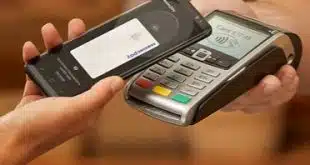One full year after complete implementation of the controversial Durbin Amendment’s debit card regulations, the impact on both merchants and consumers—the law’s putative beneficiaries—remains mixed, according to a study released by the Federal Reserve Bank of Kansas City.
While Durbin drastically reduced interchange for the country’s largest banks while exempting from its interchange caps financial institutions with less than $10 billion in assets, how many retailers and consumers have seen a benefit—and how much—varies widely according to a sometimes bewildering array of factors, according to Fumiko Hayashi, a senior economist at the Kansas City Fed and author of the article.
Especially difficult to pin down are answers to whether merchants are passing interchange savings on to consumers and whether network competition is now favoring merchants rather than issuers. “It’s complicated,” Hayashi tells Digital Transactions News. Interchange fees are paid by acquirers to issuing banks and passed on to merchants/
Merchants, for example, benefited from the interchange ceiling to a greater or lesser extent depending on what type of merchant they are, their average ticket size, their transaction volume, and their mix of signature and PIN debit. Utilities, hotels, and e-commerce merchants have reaped the largest savings from the cap on regulated issuers, the study says, because they were paying the highest rates before the cap, which is the same for all merchants, took effect in October 2011. By contrast, gas stations and groceries have seen the least savings.
Similarly, large merchants that could once command lower rates with high transaction volumes have realized smaller savings than retailers with lower volumes, and those generating high volumes of signature-debit transactions relative to PIN debit are receiving more savings than those with higher PIN traffic, since PIN debit was priced lower than signature debit before the cap, which does not distinguish by authentication method.
The average interchange fee on signature debit for regulated issuers plunged fully 24 cents, to 33 cents per transaction, after the cap took effect, according to Federal Reserve numbers cited in the study. The average PIN-debit fee, by contrast, dipped only 7 cents, to 26 cents. Overall, average debit fees dropped from 48 cents to 30 cents. Hayashi cites figures indicating that 2 million merchants accepted PIN debit in 2009, while 8 million accepted signature debit.
Savings were also muted for merchants that opt for so-called bundled pricing from their acquirers, according to the study. With such pricing, acquirers wrap interchange, network fees, and processing fees into a bundled, overall percentage rate. This practice, favored by smaller merchants, makes budgeting easier than having the fees broken out, but masks changes in interchange.
Meanwhile, small-ticket merchants like fast-food restaurants have likely seen their interchange costs increase, the study says. That’s because interchange on these transactions was already below the Durbin cap before the cap took effect. For example, a $5 signature-debit transaction that once cost 12 cents on a MasterCard card now costs 22 cents on cards from regulated issuers, according to the study. Indeed, fully 10 debit networks now levy a higher interchange fee on a $5 transaction for regulated cards than they did before the regulation took effect, the study says. For a $10 transaction, five networks do.
Even the question of network competition for merchant business is a vexed one, Hayashi says. Some experts maintain debit networks are now competing for merchant loyalty now that a Durbin provision requires debit cards to work on at least two unaffiliated networks. This provision, which became effective a year ago and was intended to hand merchants transaction-routing power, is working as intended, these experts argue, as even smaller issuers exempted by Durbin are feeling the effects of dwindling interchange rates.
But Hayashi says the picture is a little muddy. “Small issuers can’t avoid that effect of competition for merchants,” she says. “But networks still need to compete for issuers, so they have an incentive to keep interchange as high as possible.” She says Fed surveys showed a drop of 2 cents in average interchange for exempt issuers between the third and fourth quarters of 2011. Since then, she estimates, there has been “really small change” in the average.
For consumers, the picture doesn’t get any clearer. While Durbin proponents argued consumers would benefit as retailers lowered prices to reflect lower interchange, Hayashi says it’s virtually impossible to determine whether this has been the case. Any number of factors, including operational efficiencies, could account for lower consumer prices. At the same time, banks can offset this consumer benefit with new or higher fees to compensate for reduced interchange income. These fees may or may not be directly linked to debit card usage.




